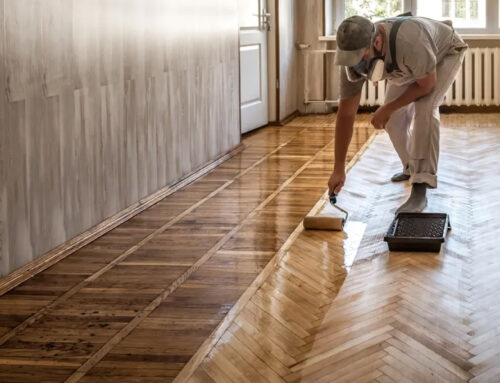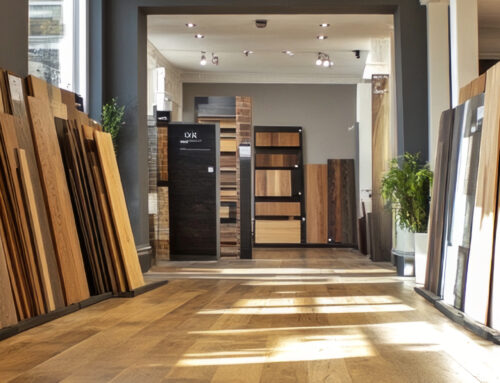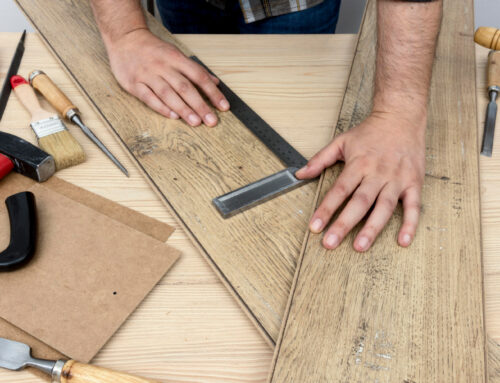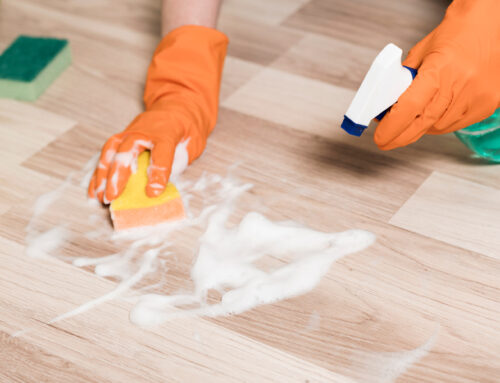Durability remains a critical factor when selecting flooring for any space. Luxury Vinyl Plank (LVP) flooring has gained popularity for its performance in both residential and commercial environments.
Modern manufacturing has elevated LVP to compete with traditional premium flooring options. With products varying in thickness, construction, and installation methods, understanding what contributes to quality becomes essential.
For property owners, flooring is a significant investment. Beyond initial appeal, knowing the long-term performance expectations helps set realistic expectations. A balanced view of both strengths and limitations ensures satisfaction with your flooring choice over time.
Major Benefits Of Choosing LVP Flooring
LVP flooring offers numerous advantages that contribute to its growing popularity in both residential and commercial settings. Beyond durability, these benefits provide practical solutions for modern flooring needs.
-
Installation Ease For Homeowners And Professionals
Most LVP products feature click-lock systems that simplify installation compared to traditional flooring. The planks connect without adhesives in many cases, allowing for a floating floor installation that saves time and reduces installation costs.
-
Design Variety And Visual Appeal
Today’s LVP comes in countless styles that convincingly mimic natural materials. Advanced printing technology creates realistic wood grain patterns, stone textures, and even contemporary designs that suit various aesthetic preferences. Color options range from light blonde wood looks to deep espresso tones, with variations that include weathered, traditional, contemporary, and exotic wood imitations.
-
Cost Effectiveness Over Time
The affordability of LVP flooring provides significant value, typically ranging from $2-5 per square foot for quality products. Compared to hardwood or natural stone that may cost three times as much, LVP delivers similar aesthetics at a fraction of the price.
Unlike carpet, LVP doesn’t harbor allergens, dust mites, or pet dander. This quality makes it a healthier choice for individuals with respiratory sensitivities or allergies, contributing to better indoor air quality.
The market data confirms this growing popularity, with the global vinyl flooring market reaching USD 55.58 billion in 2024 and projected to grow to USD 116.83 billion by 2033, exhibiting an impressive CAGR of 9.73% from 2025-2033. This substantial growth reflects consumer recognition of LVP’s practical benefits.
Potential Drawbacks Of LVP Floor Systems
While LVP offers impressive durability, understanding its limitations helps set realistic expectations and determine if it suits your specific needs.
-
Chemical Compounds And Indoor Air Quality
Some vinyl flooring products can emit volatile organic compounds (VOCs) after installation. These emissions typically decrease over time, but may concern those with chemical sensitivities. Look for products with FloorScore certification, which indicates testing for lower emissions standards.
-
Physical Vulnerabilities To Consider Carefully
Despite its durability, LVP can experience fading when exposed to direct sunlight over extended periods. Heavy furniture can create permanent indentations, particularly in softer LVP variants. For spaces with heavy items, rigid core or SPC (stone plastic composite) variants offer enhanced dent resistance.
Unlike natural wood products, vinyl flooring is not biodegradable. This environmental consideration matters to eco-conscious consumers weighing the long-term impact of their flooring choices.
Lifespan Expectations For LVP Installations
The durability of LVP flooring translates to a respectable lifespan that typically ranges from 10 to 25 years, depending on several factors. Many homeowners enjoy their LVP floors for 15-20 years before replacement becomes necessary with proper installation and maintenance.
Different vinyl formats offer varying longevity expectations. While sheet vinyl generally lasts 10-20 years, vinyl plank and tile options typically extend to 15-20 years or longer with premium products.
Key Factors That Affect Overall Longevity
Product quality makes a substantial difference in performance. Premium LVP with thicker wear layers and robust core construction generally outlasts budget options by several years.
Installation quality directly impacts longevity regardless of product quality. Improper subfloor preparation or incorrect installation techniques can significantly reduce even premium flooring’s lifespan.
Maintenance For Maximum Performance Years
Regular cleaning with proper products extends LVP’s lifespan considerably. Avoid harsh chemicals, steam cleaners, or abrasive tools that might damage the protective wear layer.
Preventative measures make a significant difference:
- Use furniture pads under heavy items
- Clean up spills promptly
- Place entry mats at doorways to reduce grit
- Trim pet nails regularly
What Makes LVP Flooring Truly Durable
When people ask, is LVP flooring durable, the answer lies in its multi-layered construction. The top wear layer shields against scratches and stains, while the core provides stability against impacts and pressure.
Quality LVP remains resilient in conditions that damage traditional materials. Unlike hardwood, LVP maintains its shape even in humid environments, requiring fewer repairs over time.
-
Performance in High Traffic Areas
LVP flooring excels in busy spaces like entryways and living rooms. Despite constant foot traffic and occasional furniture movement, it resists the everyday wear that quickly degrades other options. The protective wear layer varies in thickness between products, measured in mils. Products with thicker wear layers (20+ mils) offer superior protection against damage.
-
Real World Durability Challenges
While impressive, LVP has limitations. Pet claws and sharp objects can potentially mark the surface. Using furniture pads and prompt cleanup of spills helps maintain the appearance. For active households, LVP offers practical advantages. The surface cleans easily and doesn’t trap stains or odors like carpet, making it ideal for family homes where durability matters most.
-
Water Resistance Capabilities Of LVP Flooring
The superior water resistance of LVP flooring gives it a significant advantage over traditional hardwood. Where hardwood risks warping, swelling, and mold growth in damp conditions, LVP maintains its structural integrity even in moisture-prone environments.
Applications For Moisture-Prone Rooms
Bathrooms, kitchens, and basements traditionally present challenges for flooring due to moisture exposure. LVP performs exceptionally well in these spaces, eliminating concerns about water damage that limit other flooring choices.
While manufacturers often market LVP as 100% waterproof, some practical limitations exist. Standing water left for extended periods can potentially seep through seams and damage the adhesive or subfloor underneath. Prompt cleanup of spills remains important for long-term durability.
Final Thoughts On LVP Flooring Durability
LVP flooring delivers impressive durability through its multi-layered construction and protective wear layer. Its resistance to moisture, scratches, and daily wear makes it suitable for busy households and commercial spaces alike. While no flooring option is perfect, LVP offers an excellent balance of performance, aesthetics, and value.
Rustic Wood Floor Supply carries premium LVP flooring options with advanced wear layers and realistic wood-look designs. Our collection features waterproof options ideal for bathrooms, kitchens, and basements. Visit our showroom to explore durable flooring solutions backed by comprehensive warranties and installation expertise.
Frequently Asked Questions
How does LVP flooring handle pet accidents?
LVP flooring handles pet accidents exceptionally well due to its waterproof properties. Urine and other pet messes can be wiped away without damaging the floor, unlike hardwood or laminate, which can warp or stain. Regular cleaning prevents odor absorption.
Can LVP flooring be installed over existing tile?
Yes, LVP can be installed over existing tile if the surface is level, clean, and in good condition. Any significant grout lines or uneven areas should be filled and leveled first. Click-lock LVP systems work particularly well for this application.
Does LVP flooring change color over time?
LVP flooring can experience slight color changes when exposed to direct sunlight for extended periods. Unlike hardwood, which naturally darkens, LVP may fade slightly in areas with intense UV exposure. Quality LVP with UV-resistant wear layers minimizes this effect.
Author Profile
- I have worked in hardwood flooring for the last 8 years. Use to run a company of residential crews as well as a company with gym flooring. If you need floor installation or refinishing help, I should have an answer or at least get you in the right direction.
Latest entries
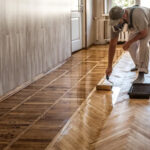 FlooringDecember 10, 2025Wood Floor Restoration in Atlanta: What Affects the Cost
FlooringDecember 10, 2025Wood Floor Restoration in Atlanta: What Affects the Cost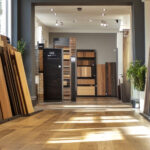 FlooringDecember 8, 2025Top 6 Wholesale Hardwood Flooring Solutions for Your Home & Office – Boise, ID
FlooringDecember 8, 2025Top 6 Wholesale Hardwood Flooring Solutions for Your Home & Office – Boise, ID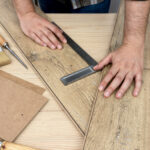 FlooringNovember 25, 2025What Engineered Hardwood Flooring Will Last Longest?
FlooringNovember 25, 2025What Engineered Hardwood Flooring Will Last Longest?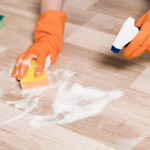 FlooringNovember 22, 2025Best Wood Floor Cleaner Liquid for Hardwood Flooring
FlooringNovember 22, 2025Best Wood Floor Cleaner Liquid for Hardwood Flooring

